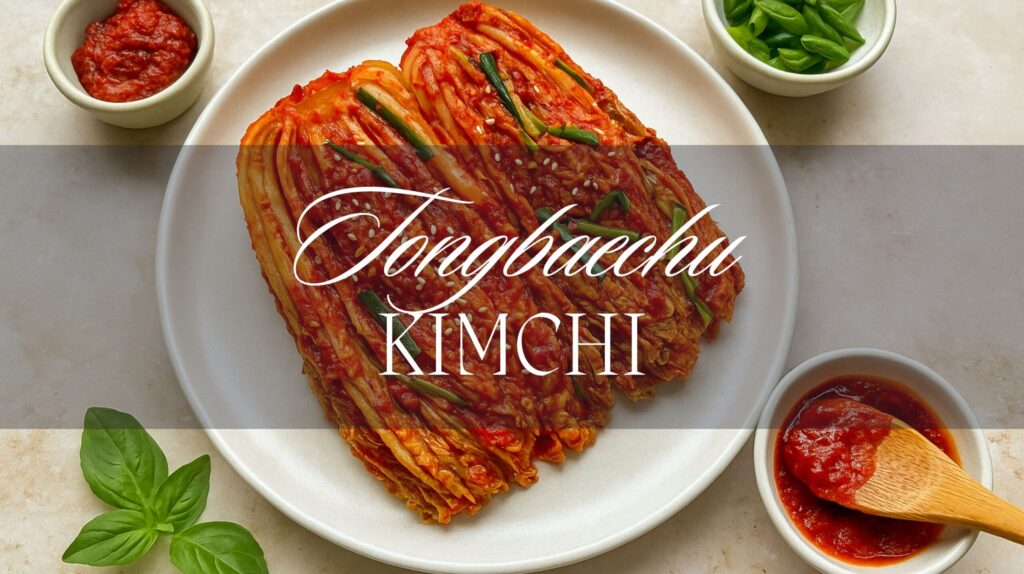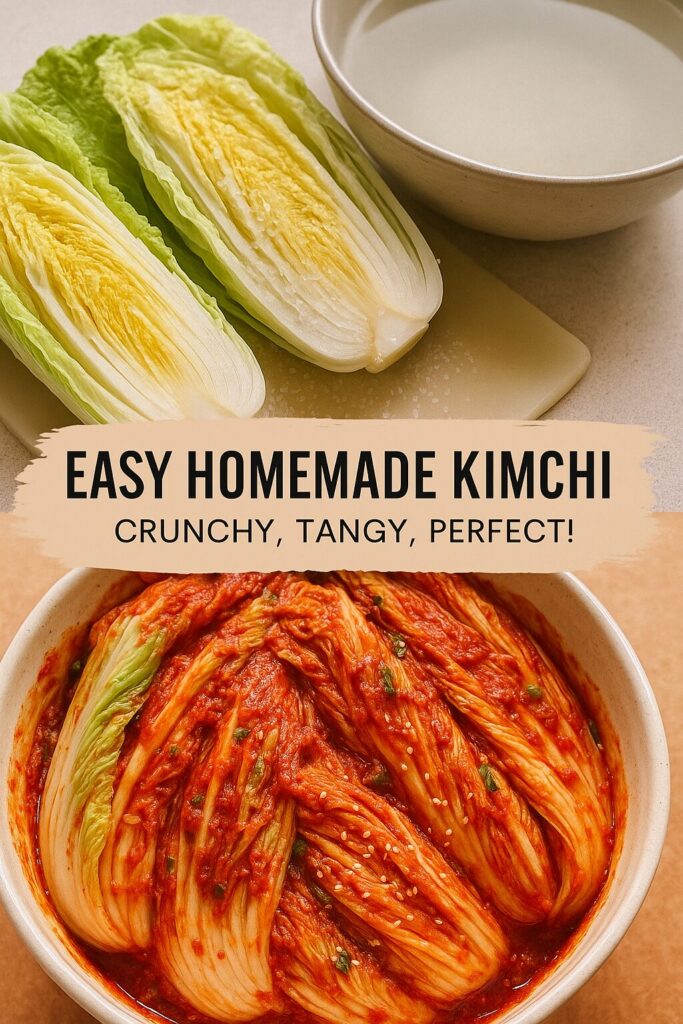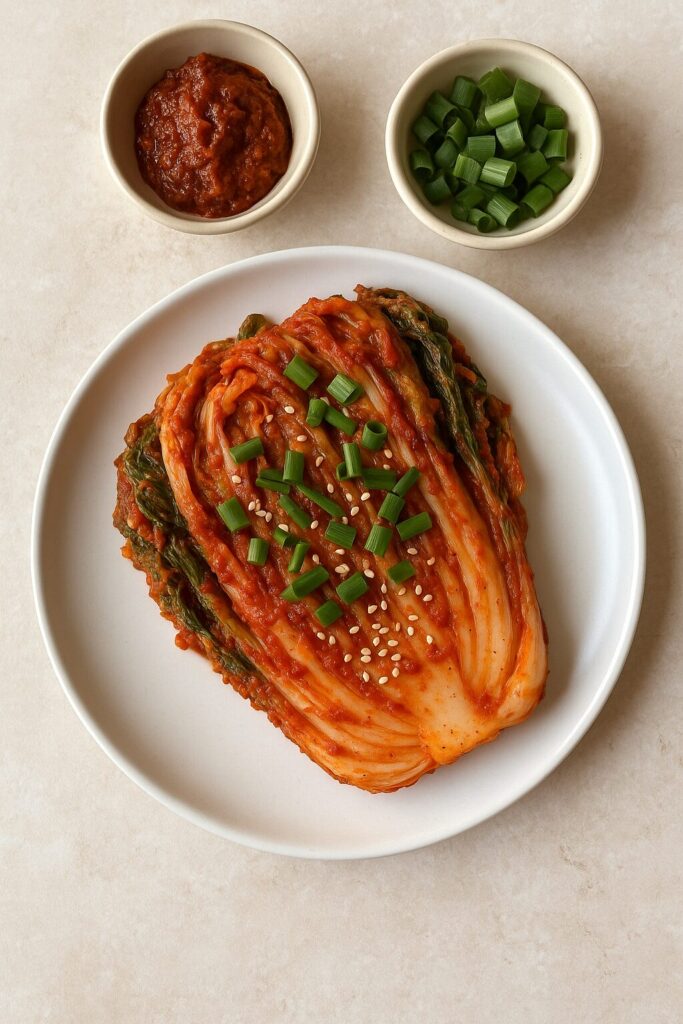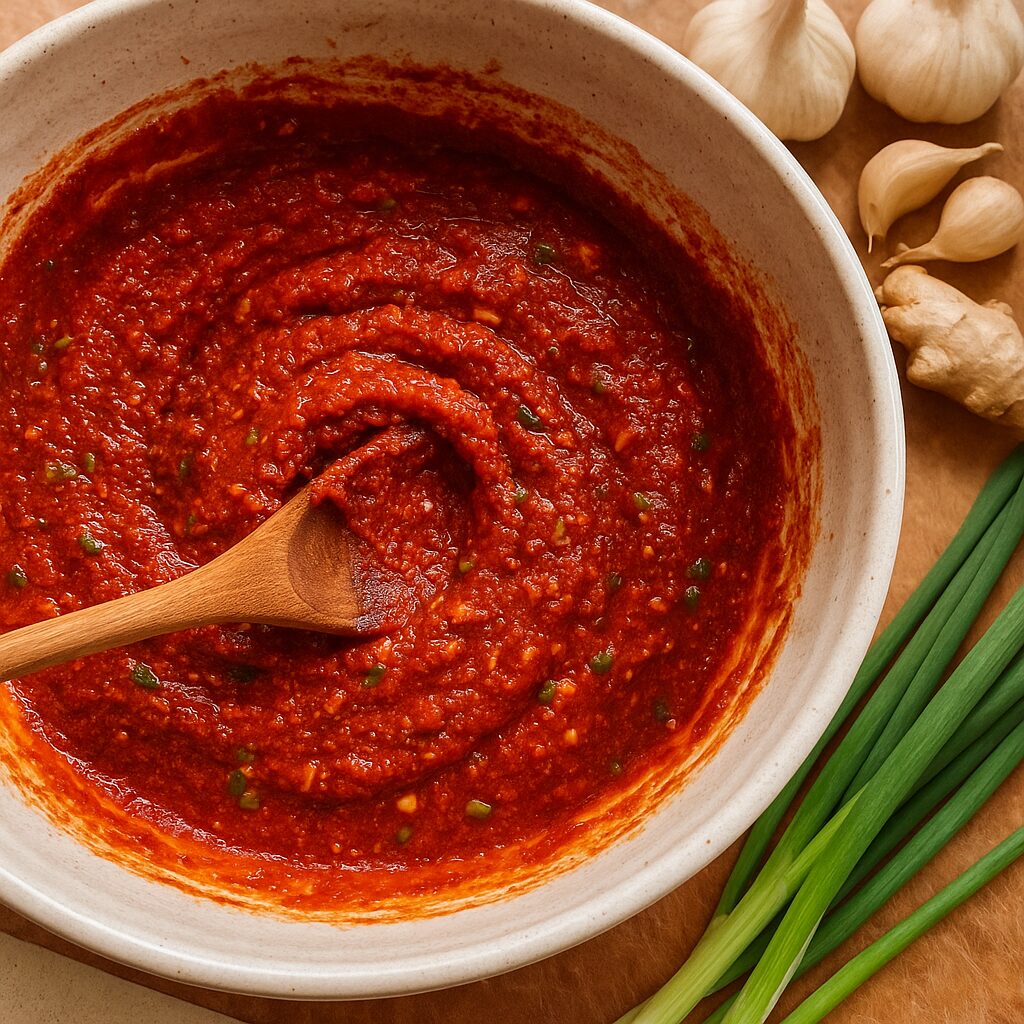If you’ve ever tasted the tangy, spicy, and crunchy goodness of traditional Napa cabbage kimchi, you know it’s more than just a side dish—it’s a Korean culinary masterpiece. But making your own kimchi at home? It’s easier than you think, and I’m going to show you how.
This is a step-by-step guide to making Traditional Napa Cabbage Kimchi (Tongbaechu-Kimchi) just like it’s done in Korea. Whether you’re new to kimchi or looking to perfect your technique, this guide will walk you through the entire process.
What Is Tongbaechu-Kimchi?
Tongbaechu-Kimchi is the classic whole-leaf kimchi made from Napa cabbage. Unlike quick kimchi, which is often made with chopped cabbage, Tongbaechu-Kimchi is made by salting and seasoning whole cabbage leaves. This traditional method gives the kimchi a complex, layered flavor that’s beloved across Korea.
Ingredients You’ll Need
For the Cabbage:
- 2 large Napa cabbages (about 6 lbs total)
- 1/2 cup coarse sea salt
- Cold water (for soaking)
For the Kimchi Paste:
- 2 cups water
- 2 tbsp sweet rice flour (glutinous rice flour)
- 2 tbsp brown sugar
- 1 cup Korean hot pepper flakes (Gochugaru)
- 1/2 cup fish sauce
- 1/4 cup salted fermented shrimp (optional)
- 1/2 cup garlic cloves, minced
- 2 tbsp fresh ginger, minced
- 1 medium onion, pureed
- 1 Korean radish, cut into matchsticks
- 5 green onions, chopped
- Optional: 1 bunch Asian chives (Buchu)
Similar Recipe Video
Step-by-Step Instructions
1. Prep the Cabbage
- Cut each Napa cabbage in half lengthwise.
- Soak the cabbage halves in cold water, making sure they’re fully submerged.
- Sprinkle coarse sea salt between each leaf, focusing on the thick white parts.
- Let the cabbage sit for 2–3 hours, turning every 30 minutes. It should become soft and flexible.
2. Rinse and Drain
- Rinse the salted cabbage thoroughly under cold water, making sure to wash off all the salt.
- Let it drain well in a colander.
3. Make the Kimchi Paste
- In a small pot, combine water and sweet rice flour. Cook over medium heat until it thickens into a smooth porridge.
- Remove from heat and stir in brown sugar. Let it cool completely.
- In a large mixing bowl, combine the cooled porridge, Gochugaru, fish sauce, salted shrimp, minced garlic, ginger, and pureed onion.
- Add Korean radish, green onions, and chives (if using). Mix well.
4. Coat the Cabbage
- Spread the kimchi paste between each cabbage leaf, making sure to coat all the leaves.
- Use gloves to prevent staining your hands.
5. Store and Ferment
- Pack the coated cabbage halves into an airtight container or a traditional kimchi jar.
- Press down firmly to remove any air pockets.
- Leave the kimchi at room temperature for 1–2 days to start fermentation.
- Once it starts to smell sour, transfer it to the refrigerator to slow fermentation.
How to Serve Your Homemade Kimchi
- Eat it fresh for a mild, crunchy taste.
- Let it age for a few weeks for a stronger, tangier flavor.
- Serve it with rice, Korean BBQ, in stews, or even on sandwiches.
Tips for Perfect Kimchi
- Use the right salt: Coarse sea salt is best for proper brining.
- Don’t rush the soaking: The cabbage needs to soften and absorb salt.
- Adjust spiciness: Use more or less Gochugaru depending on your heat preference.
- Fermentation time: Taste as it ferments to find your perfect level of sourness.
Why This Is the Best Kimchi Recipe
This traditional recipe combines the best of Korean kimchi-making techniques, ensuring every bite is bursting with umami, spice, and that addictive sour kick. It’s the perfect blend of savory, tangy, and spicy flavors.
Whether you’re a kimchi enthusiast or a beginner, making your own kimchi is a rewarding experience. Not only do you get a delicious side dish, but you also get to enjoy a taste of authentic Korean cuisine at home.
Final Thoughts
Kimchi is more than just a side dish—it’s a staple of Korean cuisine and a symbol of home cooking. By learning how to make Traditional Napa Cabbage Kimchi, you’re not just making food—you’re carrying on a centuries-old culinary tradition.
So gather your ingredients, roll up your sleeves, and let’s make some kimchi.
📌 Don’t forget to save this recipe on Pinterest for your next kimchi adventure!
Medical Disclaimer: This site offers educational and informational content only, not medical advice or professional services. Do not use this information to diagnose or treat health issues. Always consult a licensed physician for personal medical advice. Never delay seeking professional care or disregard medical advice due to content on this site. In emergencies, call 911 or visit the nearest ER. Use of this site does not create a physician-patient relationship, and no guarantees are made regarding the information provided.
AI Disclaimer: This site may occasionally use AI-generated images to help enhance our content.








